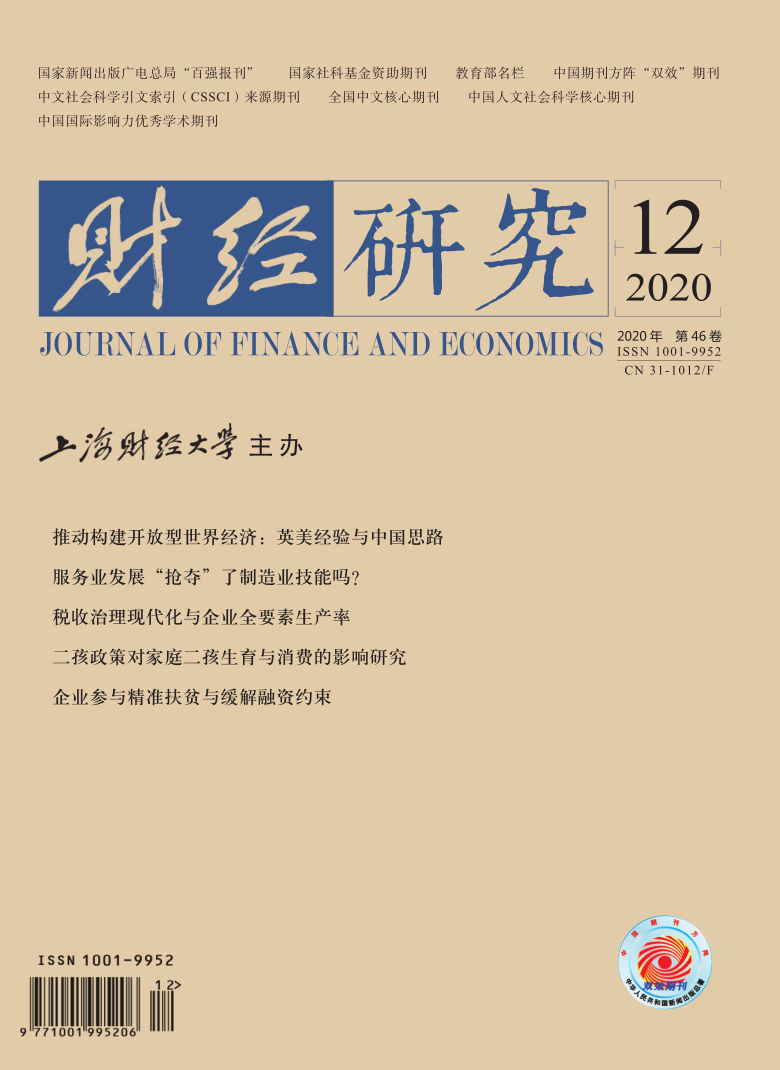二孩政策是中国促进人口结构优化与经济社会发展的一项重要公共政策。利用中国家庭追踪调查(CFPS)的四期数据,文章评估了“单独二孩”和“全面二孩”政策对家庭生育与消费的影响。研究发现:(1)“单独二孩”政策对单独家庭的二孩生育行为没有产生显著性影响,这一结果支持了“单独遇冷”的学界共识;(2)“全面二孩”政策对非独家庭的二孩生育产生了微弱的影响,政策实施后,非独家庭生育二孩的概率相比政策前的所有家庭都提高了约2.3%;(3)“单独二孩”政策并没有对非独家庭的消费产生影响,但是“全面二孩”政策显著降低了生育二孩的非独家庭的消费;(4)从家庭消费结构来看,生育二孩的非独家庭的发展和享受型消费明显下降,但是生存型消费并没有明显降低;(5)房贷对生育二孩的非独家庭的消费存在一定的抑制效应;“全面二孩”政策主要影响生育二孩的低收入非独家庭和“体制外”非独家庭的消费,对高收入非独家庭和“体制内”非独家庭的消费则没有影响。文章的研究为评估二孩政策的实施效果及对家庭消费的影响提供了经验证据。
二孩政策对家庭二孩生育与消费的影响研究——基于CFPS数据的考察
摘要
参考文献
14 邬沧萍,王琳,苗瑞凤. 从全球人口百年(1950~2050)审视我国人口国策的抉择[J]. 人口研究,2003,(4):6−12. DOI:10.3969/j.issn.1000-6087.2003.04.002
19 Atalay K, Li A, Whelan S. Housing wealth and fertility: Australian evidence[R]. Working Papers 2017-08, University of Sydney, School of Economics, 2017.
20 Becker G S. An economic analysis of fertility[A]. Demographic and economic change in developed countries: A conference of the universities-national bureau committee for economic research[C]. New York: Columbia University Press, 1960.
21 Becker G S,Lewis H G. On the interaction between the quantity and quality of children[J]. Journal of Political Economy,1973,81(2): 279−288. DOI:10.1086/260166
22 Chan M K. China’s one-child policy, fertility, and the ‘1.5-child policy’[EB/OL]. https://ssrn.com/abstract=1914445, 2011-08-22.
24 Ehrlich I,Lui F T. Intergenerational trade,longevity,and economic growth[J]. Journal of Political Economy,1991,99(5): 1029−1059. DOI:10.1086/261788
25 Heckman J J,Ichimura H,Todd P E. Matching as an econometric evaluation estimator:Evidence from evaluating a job training programme[J]. The Review of Economic Studies,1997,64(4): 605−654. DOI:10.2307/2971733
26 Li H B, Zhang J S, Zhu Y. The effect of the one-child policy on fertility in China: Identification based on the differences-in-differences[R]. Discussion Papers 00019, Chinese University of Hong Kong, Department of Economics, 2005.
27 Lutz W,Skirbekk V. Policies addressing the tempo effect in low-fertility countries[J]. Population and Development Review,2005,31(4): 699−720. DOI:10.1111/j.1728-4457.2005.00094.x
28 Modigliani F, Brumberg R H. Utility analysis and the consumption function: an interpretation of cross-section data[A]. Kurihara K K. Post-Keynesian economics[C]. Brunswick: Rutgers University Press, 1954.
29 Modigliani F,Cao L S. The Chinese saving puzzle and the life-cycle hypothesis[J]. Journal of Economic Literature,2004,42(1): 145−170. DOI:10.1257/002205104773558074
30 Rosenbaum P R,Rubin D B. The central role of the propensity score in observational studies for causal effects[J]. Biometrika,1983,70(1): 41−55. DOI:10.1093/biomet/70.1.41
31 Samuelson P A. An exact consumption-loan model of interest with or without the social contrivance of money[J]. Journal of Political Economy,1958,66(6): 467−482. DOI:10.1086/258100
32 United Nations, Department of Economic and Social Affairs, Population Division. World Population Prospects: The 2017 Revision, Volume Ⅱ: Demographic Profiles[M]. New York: United Nations, 2017: 185-188.
33 Wei S J,Zhang X B. The competitive saving motive:Evidence from rising sex ratios and savings rates in China[J]. Journal of Political Economy,2011,119(3): 511−564. DOI:10.1086/660887
34 Zeldes S P. Consumption and liquidity constraints:An empirical investigation[J]. Journal of Political Economy,1989,97(2): 305−346. DOI:10.1086/261605
35 Zhang J,Zhang J S,Lee R. Rising longevity,education,savings,and growth[J]. Journal of Development Economics,2003,70(1): 83−101. DOI:10.1016/S0304-3878(02)00088-3
引用本文
汪伟, 杨嘉豪, 吴坤, 等. 二孩政策对家庭二孩生育与消费的影响研究——基于CFPS数据的考察[J]. 财经研究, 2020, 46(12): 79-93.
导出参考文献,格式为:






 9955
9955  14473
14473

